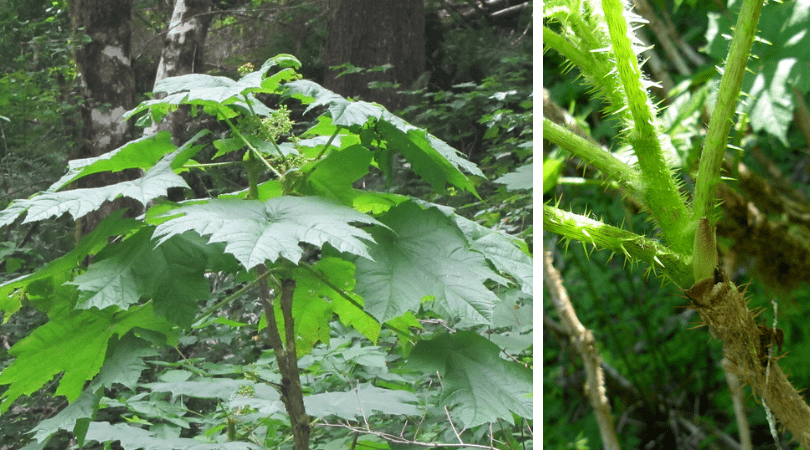It’s not hard to imagine the origin of this plant’s namesake. Devil’s club is known for its aggressive spikes on thick yellowish stems. This Pacific Northwest native generally grows around 5 feet tall (1.5 meters), but in undisturbed areas, can reach up to 16 feet (3 meters) or more! Aside from its armor, devil’s club can be identified by its giant leaves that resemble maples’. The small white flowers form clusters on a spike itself and bear bright blood-red berries in the summer.
Usually found in moist woods, wetlands, and along streams, Oplopanax horridus is extremely useful in medicine to treat colds, ulcers, lung ailments, wounds, and arthritis. Oplopanax even comes from the word hoplon, meaning “weapon” and panakos or “all-heal.” Not only that, it’s been used for deodorant, paint, charcoal, tattoo ink, and fishing lures. Humans aren’t the only ones who love Devil’s club: deer, elk, and bears browse their berries and leaves, and they provide shade and protection for salmon and rodents. Devil’s club seeds are then spread throughout the forest by the animals’ droppings, everyone wins.
Resources:
Native Plants
Devil’s club



Recent Comments